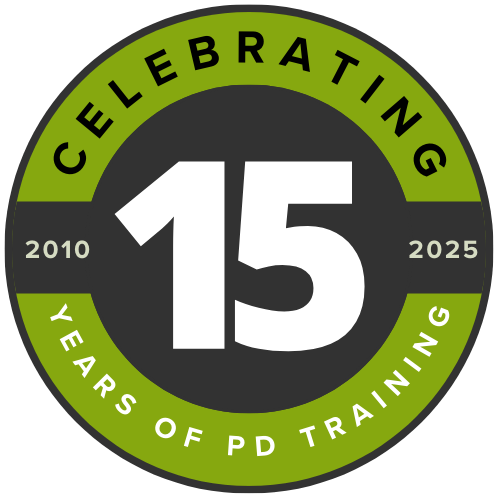Asking Good Questions
P139
|
Name different types of questions that you can use
Select and use different types of questions to get the information you need
|
Balancing Authenticity and Skill
P174
|
Describe the four leadership styles |
Barriers to Effective Communication
P254
|
Define barriers to Communication
Describe how to overcome these barriers
|
Benefits of Delegation
P154
|
State why delegation is a key skill of an effective manager
Describe the benefits of good delegation for the individual, the manager and the organisation
|
Blake and Mouton Management
P248
|
Describe the four sectors of the grid when examining task vs people orientation
Recognise which best describes your own style
|
BOOSTing Your Feedback
P177
|
List what B.O.O.S.T. stands for
Recognise the value of planning when intending to give feedback
Outline how to give feedback to someone using the BOOST checklist
|
Conflict – Thomas & Kilmann
P150
|
Describe the five conflict resolution styles
State when to use each of the conflict handling styles
|
Continuing Professional Development
P156
|
Define the benefits of CPD to the organisation and the individual |
Developing Your Influencing Skills
P164
|
State the nine influencing strategies
Define the importance of adapting your influencing style in different situations
|
Discipline and the Manager's Role
P216 |
Describe the difference between misconduct and gross misconduct
Describe the difference between performance and relationship issues
State the importance of keeping records during the discipline
process
|
Don't just Self Assess
P244
|
State the importance of self-assessment
Describe the benefits of seeking feedback when assessing personal capabilities
|
Effective Action Planning
P142
|
Identify the stages of a good action plan
Reproduce an effective action plan with clear deliverables and deadlines
|
Effective Presentations
P299
|
State the six clusters of effective presentations
List Adair's 'six principles of effective speaking'
|
Eight Career Anchors – Edgar Schein
P283
|
State what the 8 Career anchors are
Begin to identify which are your primary career anchors and what that can mean to your career choices
|
Fayol's 14 Principles of Management
P260
|
List the six primary functions & responsibilities of management
List Fayol's 14 principles of management
|
Tapping into Innovation
P261
|
State the importance of tapping into employee creativity
Describe the two approaches discussed for awakening dormant creativity within your people
|
Feeding back with a BIFF
P151
|
List what B.I.F.F. stands for
Recognise the importance of taking care when giving feedback
Outline how to give feedback to someone using the Biff Model
|
Getting Leadership Right
P169
|
Describe the challenge of 'being a flexible leader'
Recognise your current style of leadership
List some ways to expand the ways in which you can be flexible in your leadership style
|
Goals and Objectives
P243
|
State the difference between goals and objectives
Describe the purpose of goals and objectives
|
Grievance and the Manager's Role
P215
|
Describe the responsibility of the manager in handling a grievance
State the importance of the grievance interview
State the importance of keeping records during the grievance process
|
Hobb-jective
P242
|
State the difference between hobb-jectives and work related objectives
Describe how to apply SMART to hobbjectives
|
Honey & Mumford Learning Style
P247
|
State the four learning styles defined by Honey and Mumford
Describe the value of knowing your own learning style
|
Identifying Areas to Improve
P258
|
List the three choices you face in identifying areas to improve
Describe the self-assessment tool called 'Success, learn & change'
|
Immaturity Maturity Theory – Chris Argyris
P288
|
State the seven dimensions of the Immaturity to Maturity model
Describe the importance of development of maturity both personally and at work
|
Introduction To Emotional Intelligence
P161
|
Recognise why emotions play an important part in both work and life situations
Describe the meaning of self-awareness
|
Johari's Window
P245
|
Describe the four quadrants of the Johari Window model
State how the model relates to giving and receiving feedback
|
Kolb Learning Cycle
P259
|
Identify different learning styles and how each fits in Kolb's learning cycle
Recognise your own learning style and the learning styles of other team members
|
Leadership - Myth of the Complete Leader
P196
|
Describe why the idea of the complete leader is a myth
Describe the approach of the 'Incomplete Leader'
|
Levels of Listening
P277
|
Describe how listening occurs at four different levels
Identify the characteristics of listening at each level
Identify the features of effective active and deep listening to aid skills development
|
Management Styles
P157
|
Describe why managers need to use a range of management styles
List Hay Group's six different management styles
|
Objective versus Subjective Feedback
P274
|
Identify the characteristics of different types of feedback
Define objective and subjective feedback
Describe how to use a continuum to consider which feedback type to use in which situation
|
Opportunities and Ways to Learn
P252
|
Identify different ways of learning
Recognise the need to match learning method to learning style
|
Prioritising Tasks
P251
|
State the difference between Important and Urgent
Describe the effect of 'urgentitis'
|
Resilience
P249
|
State the seven learnable skills of resilience
Describe the importance of developing these skills
|
Self-Limiting Beliefs
P223
|
Describe what self limiting beliefs are and how they are formed
Identify and listen out for some common self limiting beliefs
State when and why it is important to work with self limiting beliefs
|
Situational Leadership
P268
|
Describe the different leadership styles
Recognise when to adapt your style to the needs of people and different situations
|
Support Methods for Performance Improvement
P211
|
State the importance of looking wider than just training courses when considering learning options
State the importance of learning styles when choosing a support method for improvement
|
Taking Responsibility
P158
|
Describe some benefits of taking responsibility and owning your mistakes
Identify the impact of blaming others for your mistakes
|
Ten Tips for Better Listening
P276
|
Describe why our listening skills can often be ineffective
Identify ten practical ways in which you can improve your listening
Recognise how to use the ten suggestions as a tool to assess your own
listening skills
|
The EI Journey
P250
|
Describe the four box emotional intelligence model
State the value of emotional intelligence
|
The Illusion of Objectivity
P191
|
Describe the illusion of objectivity
Describe ways to deal with your biases
|
The What and Why of Metacommunications
P273
|
State what is meant by the term metacommunications
Describe some examples of 'double talk' or 'reading between the lines'
Identify the characteristics of metacommunications
State why metacommunications
are important
|
Trust - 13 Trust Building Behaviours
P188
|
Describe the role of the 13 behaviours within the 5 waves of trust
List and summarise the 13 behaviours
|
Trust - Five Waves of Trust
P192
|
State the five waves of trust
Describe the nature of trust and the 'ripple effect'
|
Trust – The Four Cores of Credibility
P189
|
State the four cores of credibility
Describe how the four cores of credibility build trust and lead to success
|
Understanding Empathy
P246
|
Describe the difference between empathy and sympathy
State how empathy develops trust and strong relationships
|
 1300 121 400
1300 121 400
 LOGIN
LOGIN



